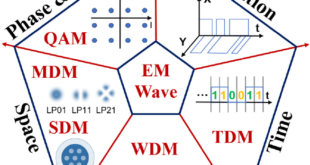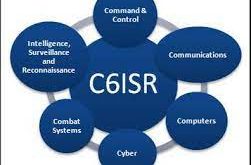The New York Times reported that the US government has defined 5G competition as a “new arms race.” According to the report, “whichever country dominates 5G will gain an economic, intelligence and military edge for much of this century.” The transition to 5G is a revolution and “this will be …
Read More »DARPA ELGAR developing sub terahertz G-Band Electronics including MMICs for emerging 6G Era
Due to the growing, insatiable thirst for information, both commercial and defense communications are driving towards increasingly higher data rates and wider bandwidths of operation. This in turn is driving systems toward higher operating frequencies, which more easily supports larger channel bandwidths. For example, today’s cellular networks (i.e., cellular networks …
Read More »High-Baud-Rate Coherent Optical Communication Systems
The explosive growth of optical communication technology in the past decades has revolutionized the telecom industry and created a global communication infrastructure with optical networks. Optical communication links and networks are essential for the Internet backbone as well as for interconnects used in data centres and high-performance computing systems. The increasing …
Read More »Terahertz Antennas
Terahertz (THz) represents the portion of the electromagnetic radiation between the microwave and the infrared region. It is within the frequency range of 0.1–10 THz, corresponding to wavelengths of radiation from 3000 to 30 µm. The advantages of the terahertz light are that they are non-invasive, intrinsically safe, and non-ionizing, …
Read More »Wi-Fi technologies migrating from Wi-Fi 5 to Wi-Fi 6
Bluetooth, developed in the late 1990s, is a technology designed to enable short-range wireless communication between electronic devices, such as between a laptop and a smartphone or between a computer and a television. Bluetooth works by using radio frequencies, rather than the infrared spectrum used by traditional remote controls. As …
Read More »Bluetooth technology powers everything from smartphones and wearables to smart home devices and headphones
Bluetooth, developed in the late 1990s, is a technology designed to enable short-range wireless communication between electronic devices, such as between a laptop and a smartphone or between a computer and a television. Bluetooth radio technology was developed by L. M. Ericsson in 1994. The standard is named after the …
Read More »Next-generation In-Vehicle Networking
Advances in automotive design have led to an exponential increase in vehicle electronics. Today’s vehicle design improvements are due in large part to the application of electronics to automotive systems. Vehicle functions are divided into systems and sub-systems to provide for passenger entertainment, comfort, and safety, as well as to …
Read More »After 5G, now 6G research race to satisfy Military’s growing requirements to gather, analyze, and share information rapidly
With every generation of communications technology, the focus of the network changes. The 2G and 3G eras centered on human-to-human communication through voice and text. 4G heralded a fundamental shift to the massive consumption of data, while the 5G era has turned its focus on connecting the Internet of Things …
Read More »Militaries moving from C4ISR and C5ISR to C6ISR
Success in traditional warfighting domains now requires mastering the Information Environment, which includes the electrometric spectrum, space, cyber domain, and the data that crosses them. Rapid data-enhanced decision-making, which increases lethality, defines warfare in the Information Age. Success depends on rapidly understanding the environment and enemy to make decisions faster …
Read More »Remote Security Assessment System (RSAS)
Network vulnerabilities are an increasingly common issue in today’s highly complex computing environments. With exploit attacks appearing faster than ever before, it has become significantly more challenging for organizations to protect against attacks. Only if users could discover these vulnerabilities in their network and proactively get ready before attackers take action, can the losses …
Read More » International Defense Security & Technology Your trusted Source for News, Research and Analysis
International Defense Security & Technology Your trusted Source for News, Research and Analysis




